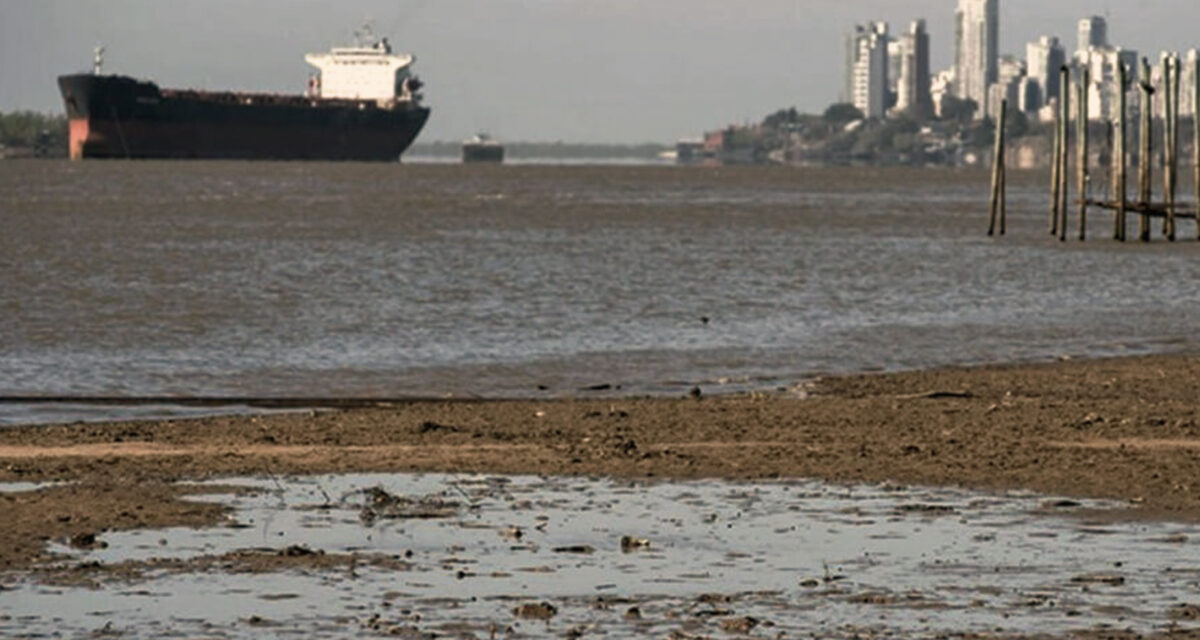Circular
Servirio`s News
ALERT: DUE TO THE DOWNSPOUT OF THE PARANÁ RIVER, GRAIN SHIPS LOAD 10% LESS

In the ports of Gran Rosario, each ship is resigning between 4500 and 5500 tons, as warned by the agro-industrial sector; they fear the problem will get worse.
Following the 90-day extension of the Hidrovía concession contract, the agro-export sector is now concerned with the low water level of the Paraná River, which was already severely affected in 2020 and whose history seems to repeat itself this year.
Although the measurement of the feet is minute by minute, the general panorama faced in the ports of Gran Rosario is complicated because the water level prevents ships from fully loading their holds. They are setting sail with quantities much less than their capacity and the commercial contracts they had agreed upon.
In dialogue with the newspaper Nación, Guillermo Wade (manager of CAPyM – Chamber of Port and Maritime Activities), explained “Yesterday we were three feet shorter but today the situation has occasionally changed and the ships are leaving with two feet less. Today each ship that sets sail does so with 4,500 and 5,500 tons less due to the low water level, which means around 10% of the total load of a ship”. For Wade, the situation is going to get worse in the near future because he is on his way to being four feet shorter. He exemplified that “between 8000 and 10,000 tons per ship will be lost, with the extra cost that that means.”
Although in the agro-industrial sector they do not see this issue as an emergency, they are already on alert. For Luis Zubizarreta, president of the Chamber of Commercial Private Ports, it is a matter of concern, but they still do not have it “as imminent.” In this sense, he understands that “it is highly probable that there will be a river with low water as in the year 2020”.
“The decline that is now taking place in Alto Paraná, which is more damaging to Paraguayan soybeans than it is decreasing, in the Posadas and Encarnación area, will have an impact on us in a few months. Rain is key in Brazil, but luck is already cast because it rained Little”, he remarked.
According to Wade, the prospects for the future, as in 2020, are not favorable because with the thick harvest in process the downspout of the river will continue until December, when the seasonal rainfall just returns.
“This is the fourth consecutive year that it is raining less than average. The rains in Brazil are scarce and the two main contributions to the basin are the Paraná iba and Grande rivers, which have a deficit load of water. The first years were not noticed, but already last year the situation changed. The problem is not greater because Hidrovía has been doing a very good job and has active dredgers”, he said.
“As the ships cannot load the total of their warehouses in the ports of Rosario, they must complete it in other terminals of Bahía Blanca or Necochea, where the cost of freight by land, by train or trucks is added and where a ship has a approximately $ 20,000 per day”, he said.
Finally, he reiterated that dredging is a piece of elementary importance to preserve the navigability of the river and pointed out that the Belgian company Jan De Nul, which has extended the concession of the road for 90 days, only has the obligation to dredge until when the hydrometer marks 2.47. “However, the company continues to do so because otherwise it would not have assured the profitability of its business”, he concluded.


